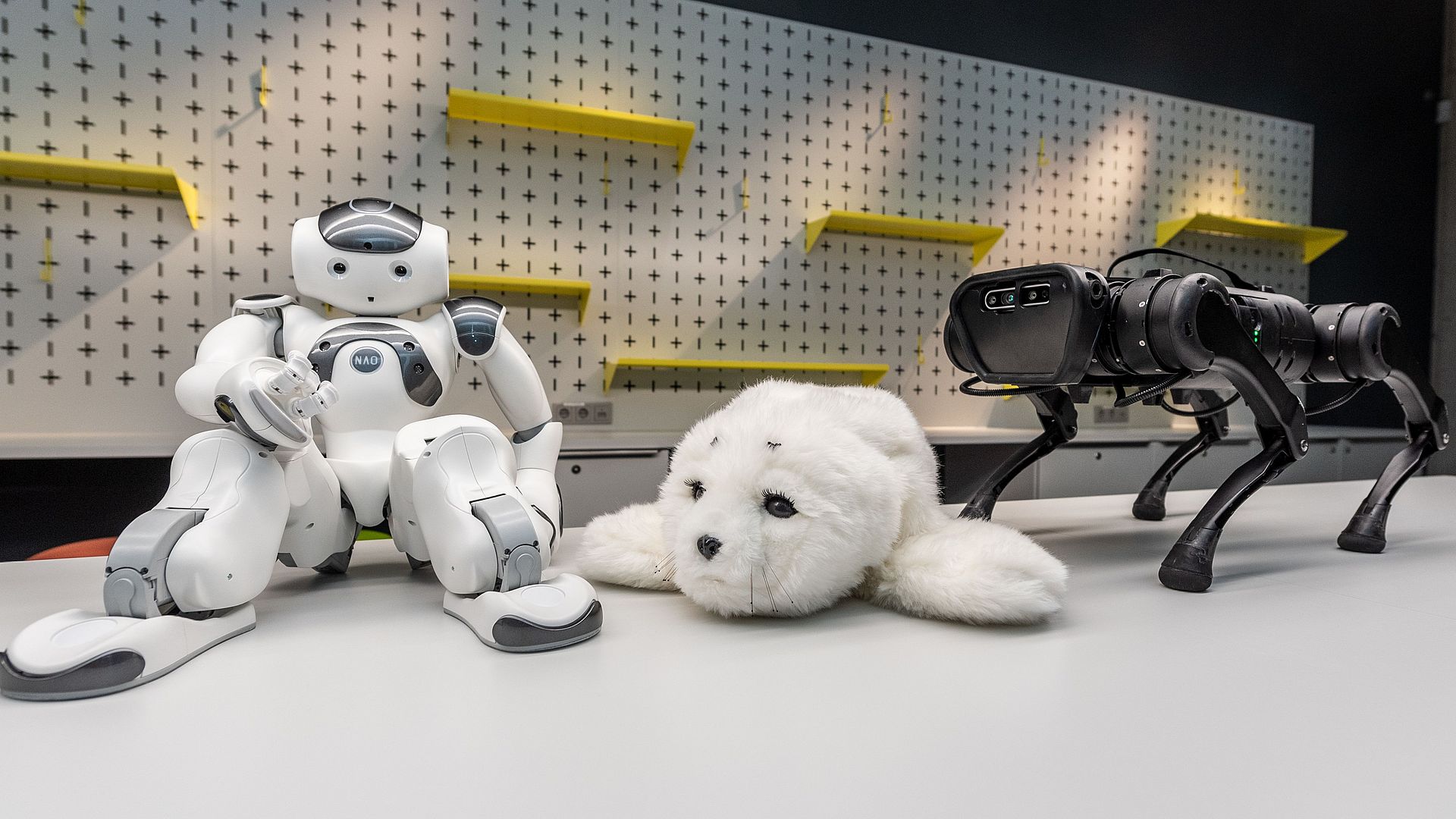
Photo: Deutsches Museum | Christian Illing
Robots in the Future Museum
What Can Robots Do - Today and in the Future?
What are the fields of application for robots? Who built the first robot? How does a robot work?
Experiencing robots in the museum: that means not only seeing robots in the exhibitions, but actively interacting with them. Take the robot dog A1 for a walk or stroke the caretaker seal Paro. Meet the robotics team of the Future Museum and get up close and personal with the latest developments in robotics.
AMECA has 52 motors, 17 of which are installed in the "face" alone. These provide a realistic representation of human movements and facial impressions. AMECA's introduction video from December 2021 immediately went viral and triggered worldwide enthusiasm.
Year of birth: 2021
Place of birth: Falmouth, United Kingdom
Height: 187 cm
Weight: 49 kg
Gender: neutral
Movement: with the help of 52 motors
Manufacturer: Engineered Arts Ltd.
The Robot Team of the Future Museum
Meet the Machines!
Robots have been increasingly used in our everyday lives for years. In many areas, such as medicine, industry or research, robots can take over tasks that were previously done by humans. Due to their possible uses in different areas and their sometimes extraordinary abilities, robots have the potential to play an even greater role in our lives in the future.
At the Deutsches Museum Nürnberg, visitors get to know different robots and learn more about their possible uses. For example, there is Paro, a therapy robot in the shape of a seal, which is used to calm and engage people with dementia. Or Keeko, which helps children learn. NAO is a humanoid robot in the museum. With the help of its camera, it recognises people and makes contact with them. It can also dance and perform various gestures.
The Future Museum is a place of encounter. Between people, but also between man and machine. In the future, the use of robots is to be further expanded. For example, robots can impart knowledge in the museum or help in the search for certain exhibition areas.
This Text Was Written by an Artificial Intelligence (AI)
Would you have noticed that? Bots are not only working in the exhibition area, but also in our web editorial office - we are experimenting with them. This text was generated with OpenAI's Generative Pre-trained Transformer 3 (GPT-3). GPT-3 is a very powerful language model that can generate natural-looking texts and solve complex tasks at the same time. To do this, this language model is trained using Deep Learning and AI algorithms.
Robots in the Museum
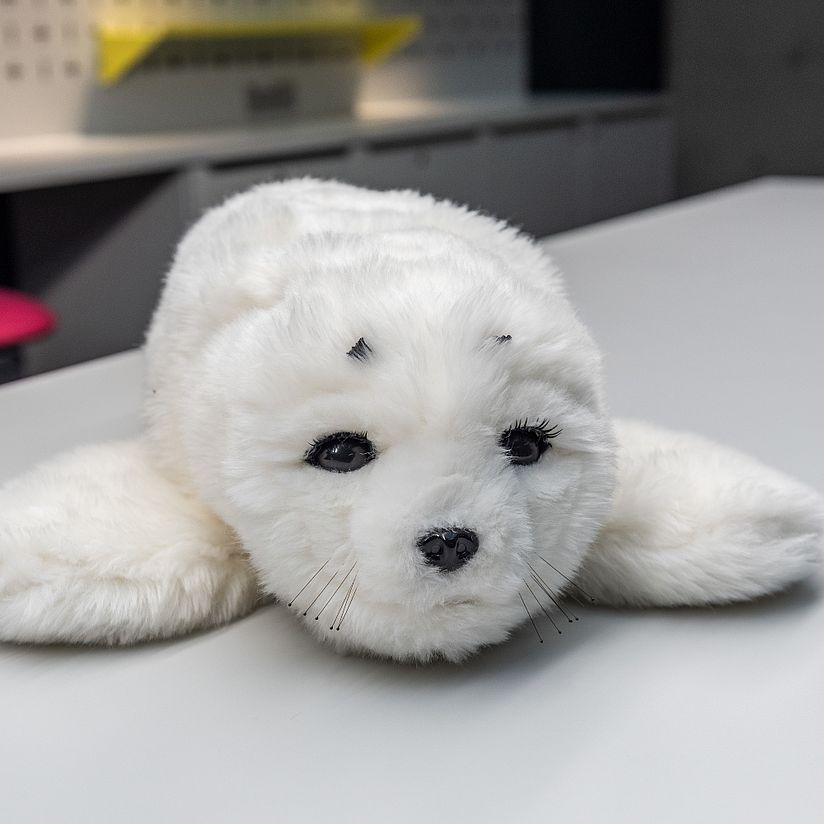
Photo: Deutsches Museum | Christian Illing
Paro - the Therapy Robot
At first glance, Paro looks like an ordinary cuddly toy. But the seal is much more than that! Developed in Japan, it is to be used in care facilities to entertain the residents and give them a task. In doing so, Paro reacts to her name as well as to external influences such as petting. With the help of software and machine learning, Paro remembers who treats her well. It has been sold since 2004 and is now even used in nursing homes worldwide.
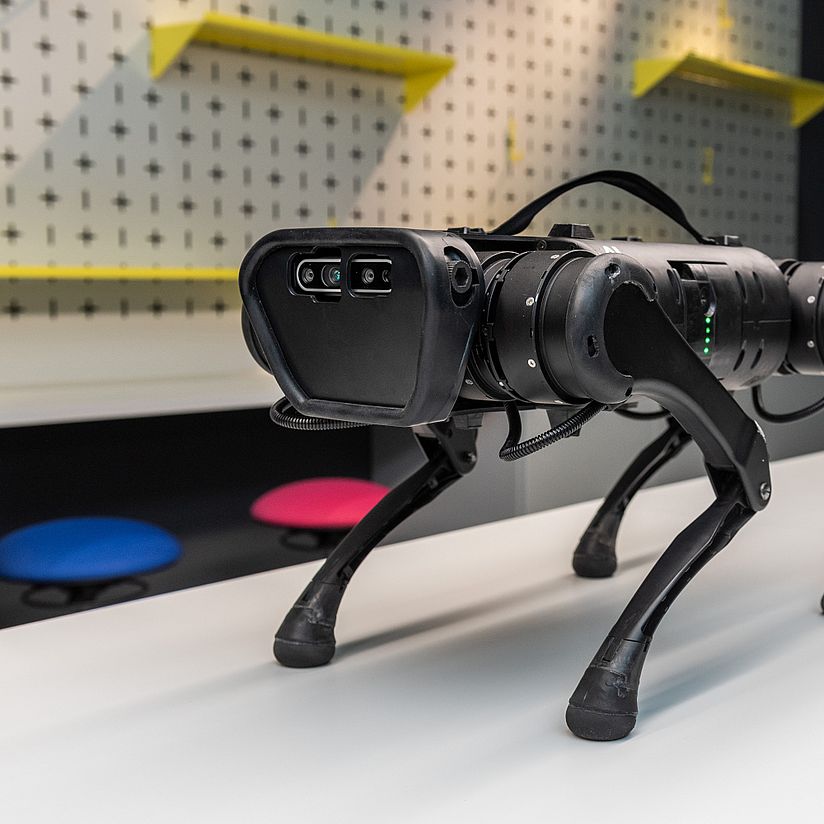
Photo: Deutsches Museum | Christian Illing
Unitree A1 - the Robot Dog
The Unitree A1 is our public favourite. No matter where it appears in the museum, the visitors are thrilled. With its backwards roll or its dance moves, it impressively demonstrates what technology can already do. In sprint mode, it can reach a top speed of up to 12 km/h - that's faster than any other four-legged robot on the market. With its balance algorithm, it also overcomes smaller obstacles and steps with ease. The Unitree A1 is an all-rounder that is used, for example, by the police to explore impassable areas and is simply a lot of fun in our museum.
![[Translate to English:] Roboter Keeko das Spielkind](https://www.deutsches-museum.de/assets/_processed_/7/f/csm_KeeKo-Roboter-Deutsches-Museum-Nuernberg-DSCF1087_3da8d3176a.jpg)
Photo: Deutsches Museum | Christian Illing
Keeko - the Play Child
Singing, dancing, telling stories: These are just some of the skills Keeko has to offer. The robot developed in China is used in kindergartens and preschools to relieve the staff. Keeko is supposed to entertain children, teach them things and instil good habits. Keeko does not yet speak any languages other than Chinese, but it can dance to international songs.
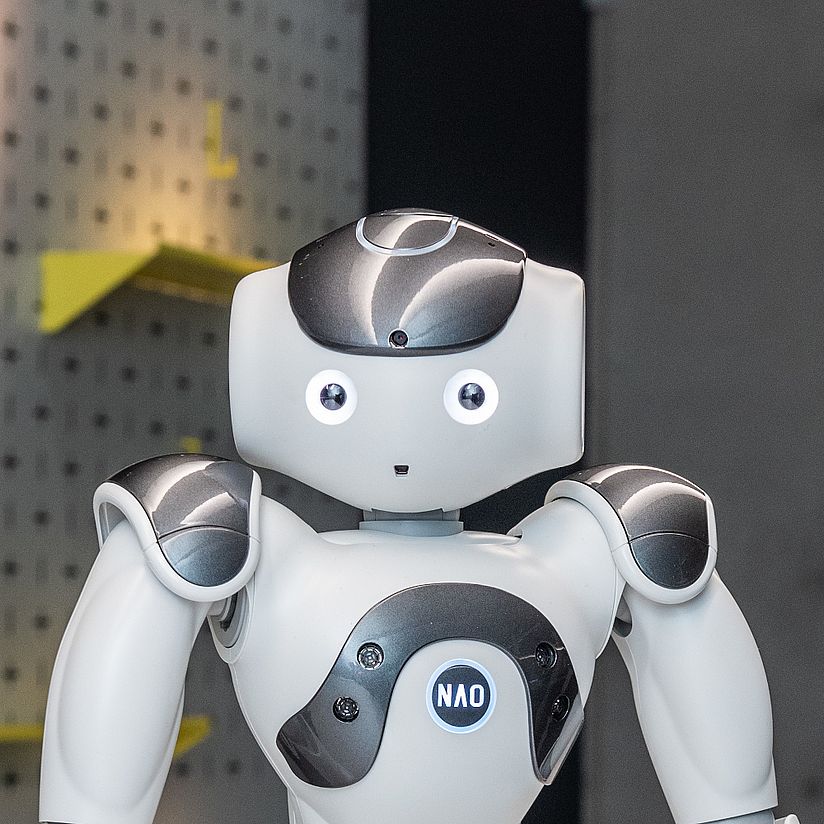
Photo: Deutsches Museum | Christian Illing
NAO - the Entertainer
NAO has been inspiring people with its human appearance since 2006. The robot developed by the Japanese company Softbank Robotics, is mainly used in education. With NAO, many children around the world learn about programming in a playful way. The robot can be controlled via a simple interface. NAO is a likeable all-rounder. From push-ups to a walk to a dance routine, everything is possible. Fun sequences and personalised dialogues can be created in infinite variety.
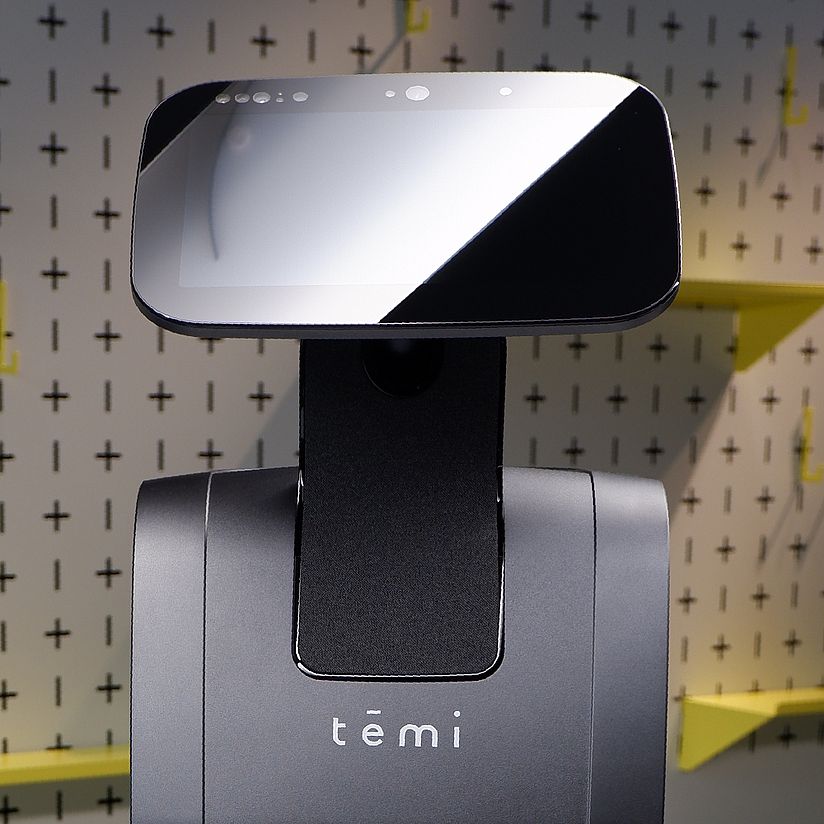
Photo: Deutsches Museum
TEMI - Always Ready to Help
Where is the air taxi? Can I book a guided tour? Temi always has an answer to these and many more questions. The robot was developed as an assistant for households and retail shops and has been part of the team since April 2022. In the future, TEMI will assist visitors in the exhibition at the Deutsches Museum Nürnberg.
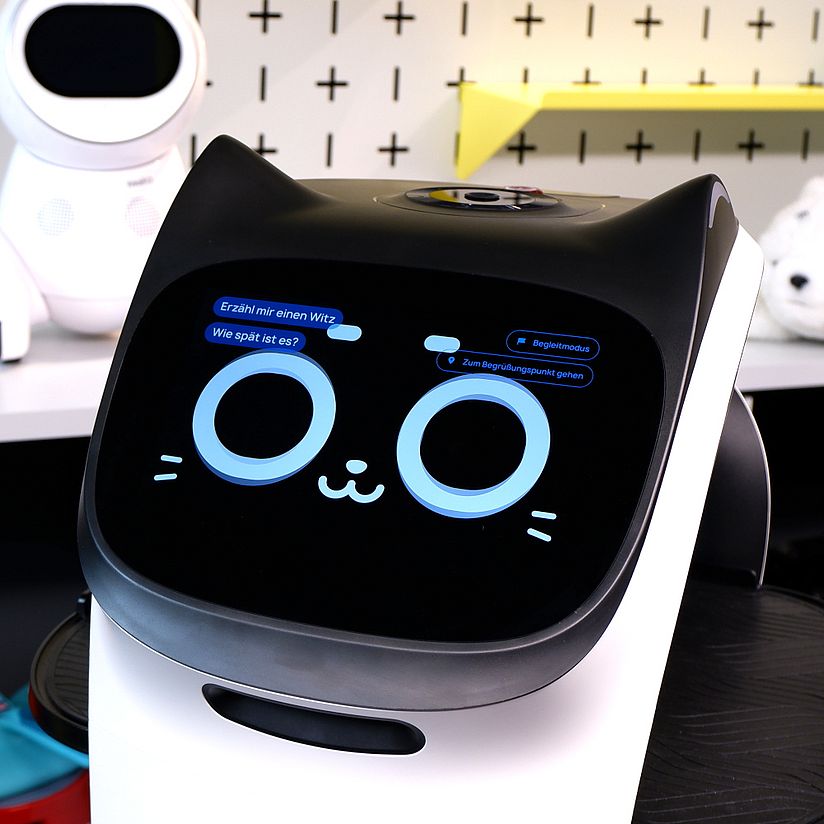
Photo: Deutsches Museum
Bellabot - the Service Worker
Out of the way! Bellabot brings the menus safely to the right seat even when the restaurant is full. The delivery robot is designed as a waiter to counteract the frequent lack of staff in restaurants. With its slightly cat-like appearance, Bellabot is an eye-catcher in any environment. Once Bellabot is familiar with our museum, she will be used for special events.
![Der Telepräsenzroboter Double 3 im Deutschen Museum Nürnberg [Translate to English:] Telepräsenzroboter Double 3 im Deutschen Museum Nürnberg](https://www.deutsches-museum.de/assets/_processed_/7/1/csm_Deutsches-Museum-Nuernberg-Roboter-Double-Telepraesenz-Steckbrief_775e841232.jpg)
Photo: Deutsches Museum
Double 3 - the Avatar
The Double 3 is a telepresence robot. Via its software, you can switch to its display and steer the robot through the museum at the click of a mouse. It should increase the accessibility of the museum: People who are physically unable to visit the museum themselves get an indirect impression of the exhibition via Double 3.
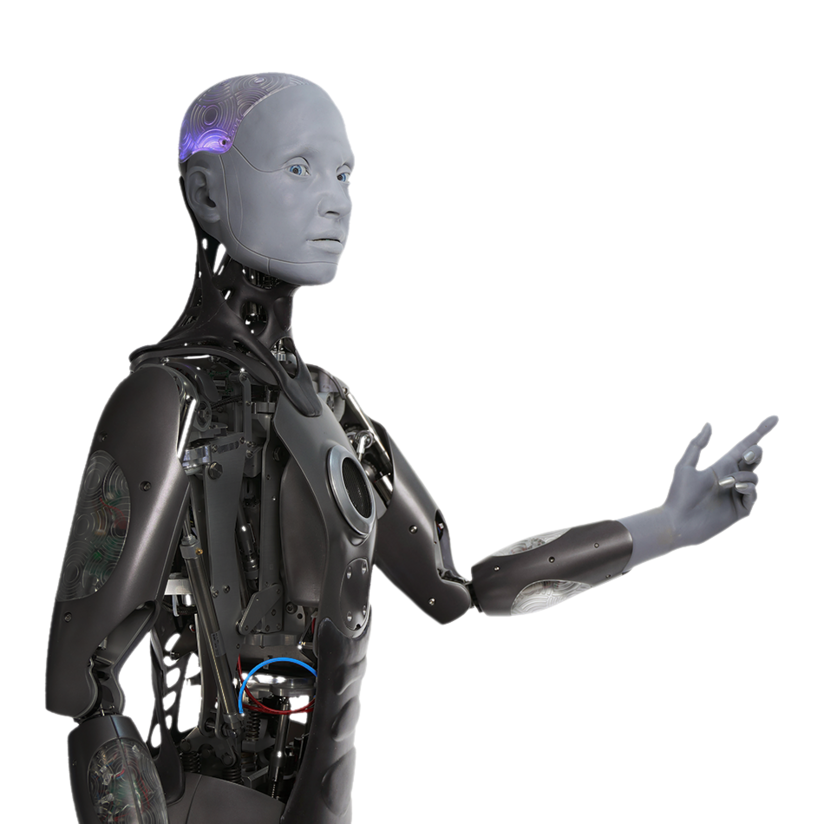
Photo: Deutsches Museum
AMECA - Quite Human
When AMECA was presented in December 2021, the robot triggered enthusiasm worldwide. AMECA is controlled by 52 motors and can deceptively imitate human gestures and facial expressions. In May 2022, AMECA could have been experienced by the public for the first time in Europe at the Future Museum.
